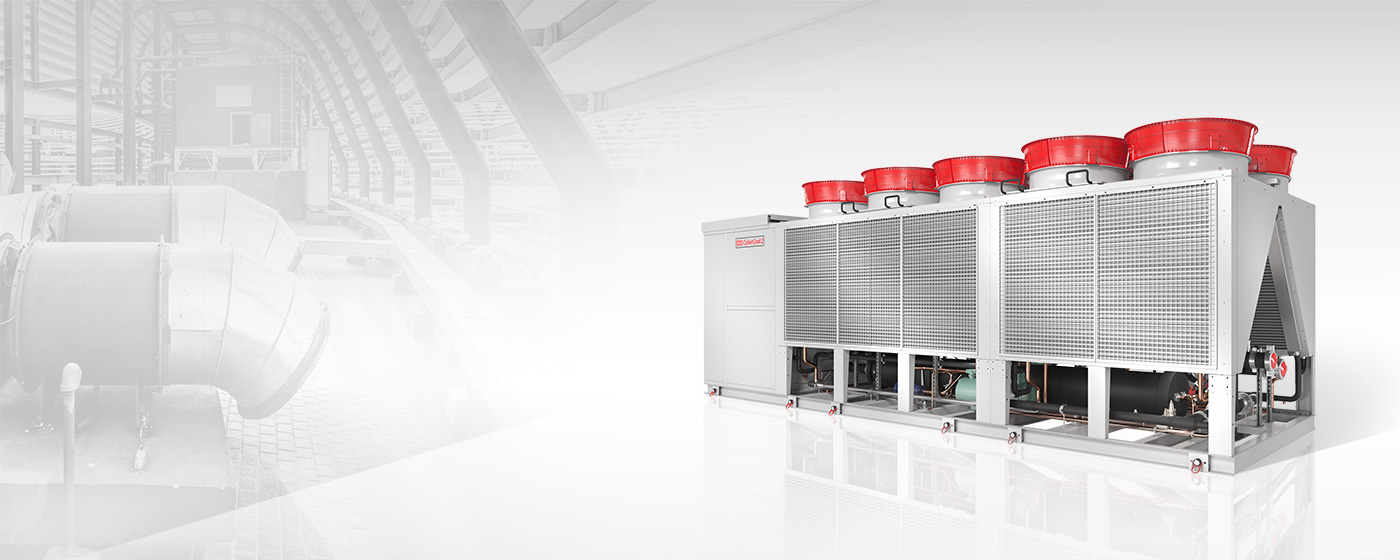Thanks to its wide-ranging benefits, the concept is now also becoming established in other sectors as a genuine cross-industry innovation. Demands in terms of reliability, availability and energy efficiency are particularly high in a Data Center. So it is no wonder that other industries are keen to enjoy the benefits of low-noise cooling. In this blog article on chillers we will be taking a look at one very special benefit: The comprehensive sound-proofing makes such a chiller highly attractive for many different sectors and projects.
The noise dilemma
Our customer in the scenario we describe had no idea that noise might become a problem. An industrial manufacturer, the company operates a large site with production running round the clock. Noise had not previously been an issue. It was only when a particular construction project was carried our that an industrial chiller needed to be installed directly adjacent to an office building. But it was essential for the chiller to meet a number of requirements: The system first had to be highly efficient, as the company's self-imposed CO2 limits could not be exceeded. Other crucial factors were that the chiller should operate as quietly as possible, and take up minimal space. Compact size and low noise emissions are contradictory demands in chiller design however. Even with identical cooling capacity, large chillers are usually more efficient and quieter than small ones. Data Centers are often sited in locations of mixed residential and commercial usage, and operate round the clock.
So a Data Center chiller has to adhere to more stringent noise limits, particularly at night. And Data Centers have changed significantly in recent years: Increasing packing densities have led to a continuous rise in heat loads inside Data Centers, though the footprint remains virtually the same as existing centers are upgraded or new ones built. As a result, the space available to install chillers on a roof or next to a building is rapidly shrinking. This means in order to achieve the required cooling capacity smaller chillers need to be installed, but they tend to be overly loud and not efficient enough.
Sound-proofing as a development concept
The running noise emissions of components such as compressors, fans and pumps were tested in great detail right at the start of the development process when designing the CyberCool 2 chiller. The outcome of this development work was that the CyberCool 2's compressors were housed in a special sound-proofed chamber. This first step in itself greatly reduced noise emissions. Sound-proofing the fans proved rather more complex however. Being small, they have to rotate faster in order to propel more air. This inevitably makes them louder, and they consume more power. To resolve this problem, the STULZ development team decided to fit the largest sized fans possible, while making optimum use of the space available on the chiller. They did so by ensuring that there was literally no room for even a sheet of paper to fit between the individual fans. To enable the new fan system to deliver its full power, it was necessary to redesign the entire air conduction system, from the intake, via the heat exchangers, to the fans.


